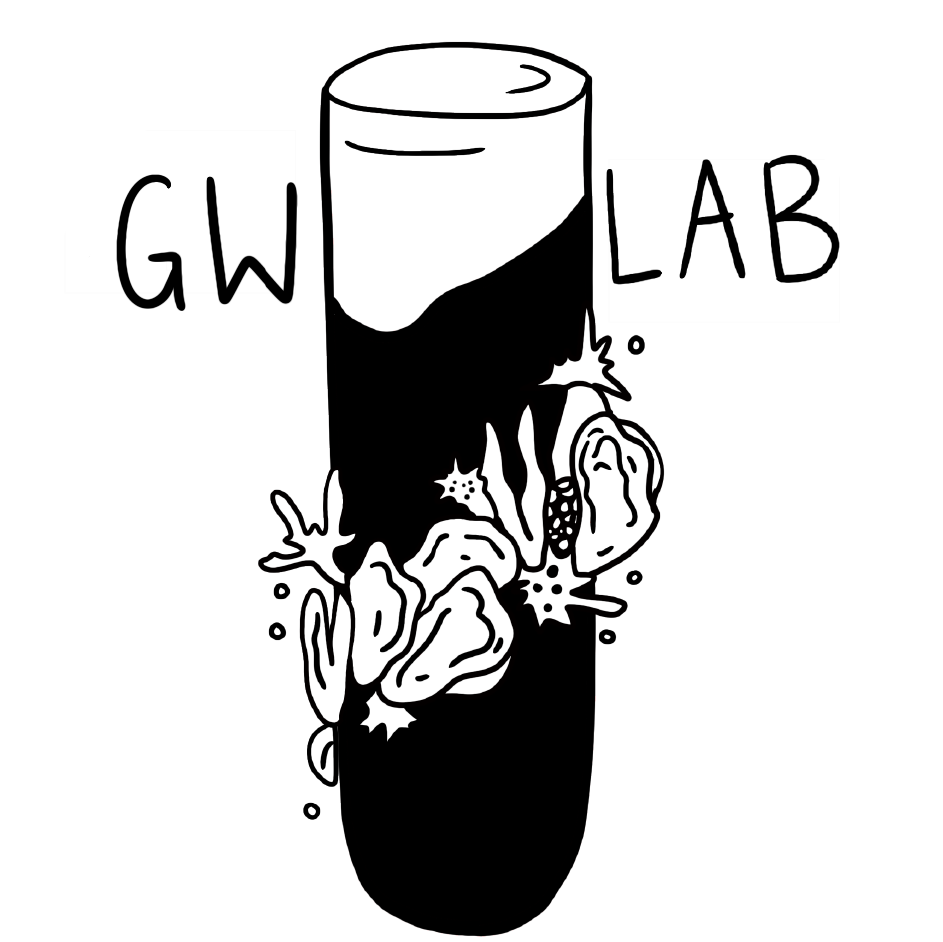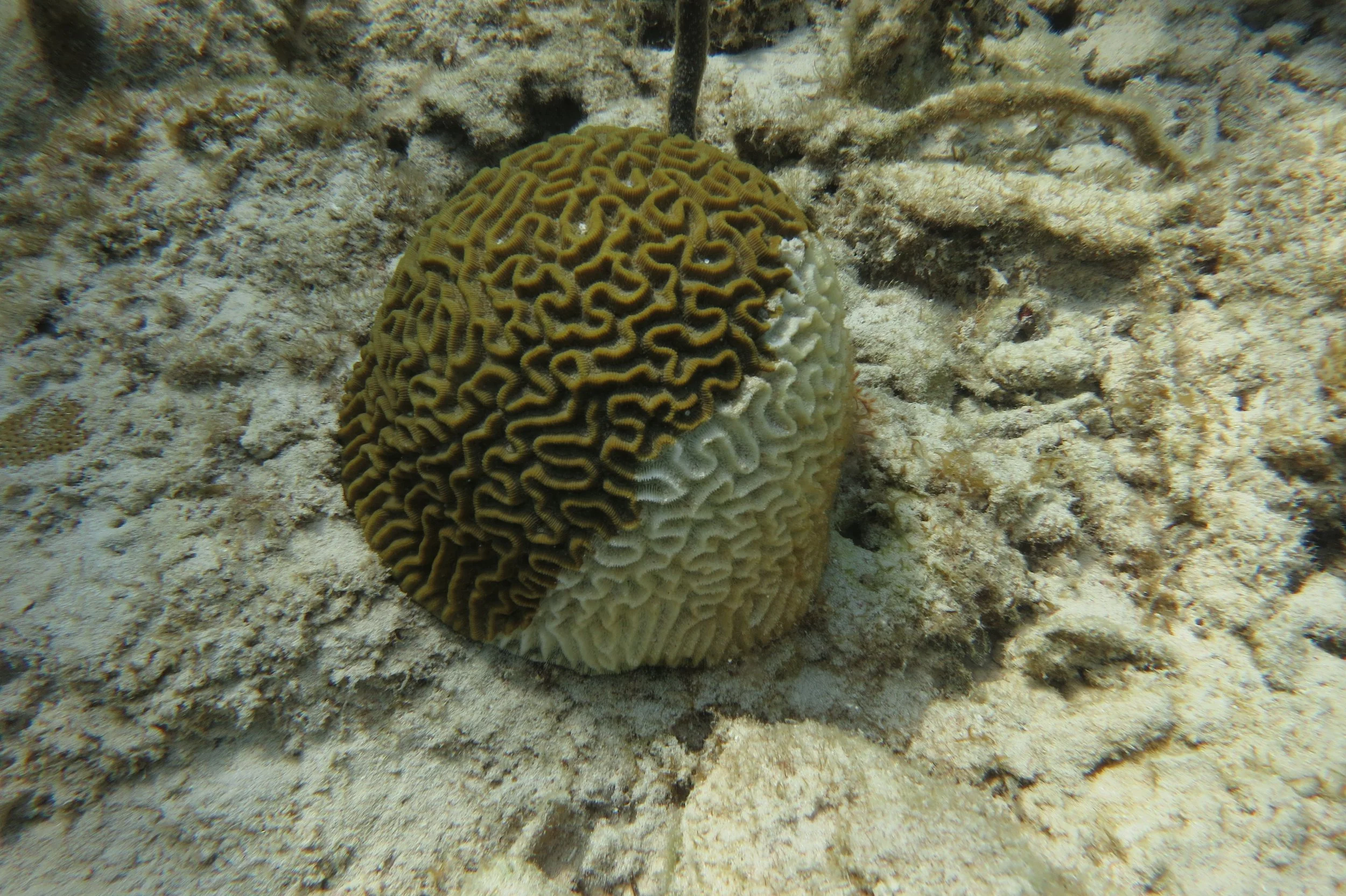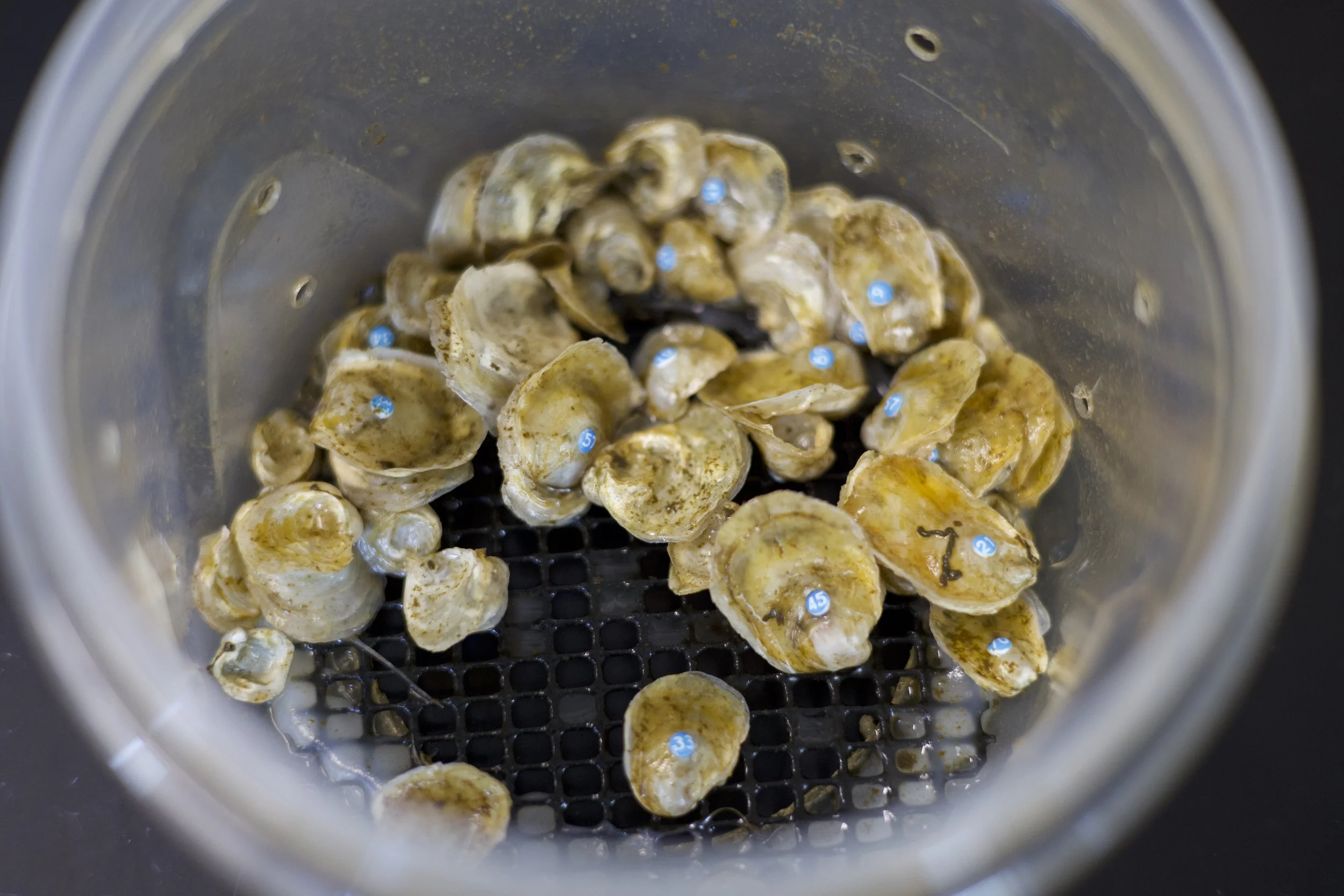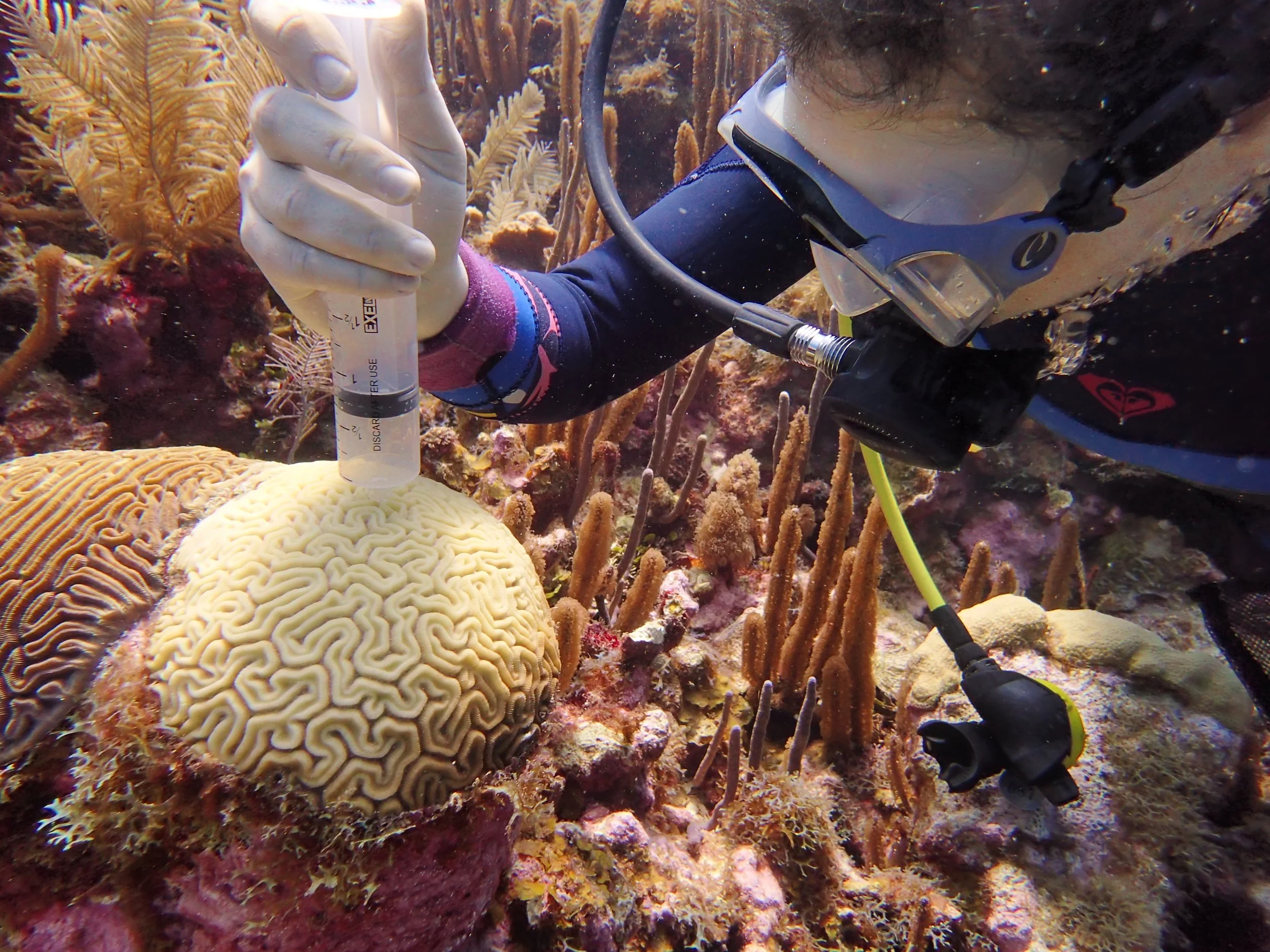
Research
Exploring resistance to stony coral tissue loss disease
-
Stony coral tissue loss disease (SCTLD) is a new devastating white syndrome first reported off the coast of Miami in 2014 and currently spreading throughout the Caribbean. Unlike other coral diseases, SCTLD afflicts over 20 species of coral, with disease severity and mortality varying by species. The majority of species affected by SCTLD show intermediate levels of susceptibility, with 50% or more of colonies never developing disease signs. We currently do not know what makes some coral colonies resistant. We are working to understand disease resistance by comparing the genetics of corals that died from SCTLD to those that continue to survive on three levels: the coral animal, the symbiotic algae, and the microbiome.
-
Perry Institute of Marine Science
-
-
Item description
Mechanisms of carryover effects in oysters
-
To accurately predict organismal responses to climate change, we need to understand how organism phenotypes are influenced by past environmental experiences such as those that occur early in life. Because climate change is increasing the likelihood that organisms will be exposed to the same stressors repeatedly over their lifetimes, these “within-generation carryover effects” may play an increasingly important role in adaptive responses. But little is known about the mechanisms behind observed carryover effects or how they persist and change across organism ontogeny. we are exploring how early life exposure to two interacting climate change stressors – hypoxia and warming – impacts eastern oyster (Crassostrea virginica) fitness as well as the potential mechanisms and ecological consequences of these carryover effects across multiple years and at multiple points during ontogeny.
-
Tom Miller (Chesapeake Biological Laboratory)
-
NSF Award # 2222310
-
Donelan SC, D Breitburg, MB Ogburn. 2023. Legacy of past exposure to hypoxia and warming regulates an ecosystem service provided by oysters. Global Change Biology. pdf
Donelan SC, D Breitburg, MB Ogburn. 2021. Context-dependent carryover effects of hypoxia and warming in a coastal ecosystem engineer. Ecological Applications. pdf
SCTLD and the use of probiotics in coral restoration projects
-
Probiotics are a promising alternative to antibiotics in the treatment of SCTLD as they can protect healthy colonies, stop lesion progression, and prevent disease transmission while limiting environmental harm. We are working to characterize and compare resistant colonies of four coral species in San Andrés Island, Colombia. Our lab is working to identify bacterial biomarkers contributing to disease resistance using metagenomics. Our results will be used to develop probiotic treatments to both treat the disease and protect against infection. Probiotics will then be incorporated into both asexual- and sexual-based restoration efforts.
-
-
CORDAP
-
Environmental and genetic influences on oyster microbiomes
-
Host-associated microbes play critical roles in host fitness and ecosystem function. Microbes can provide hosts with necessary compounds, protect against pathogens, and metabolize nutrients. As filter feeders, bivalves have highly plastic microbiomes that are especially influenced by the surrounding seawater, yet they also maintain a unique core set of microbes. We are using a combination of field sampling and both field and lab experiments to understand the factors that shape bivalve microbiomes. Our goal is to understand not just the health of the animal itself, but the broader ecosystem function and ecosystem services provided by these animals.
-
-
-
Environmental and community effects on Perkinsus marinus
-
We are using the oyster Crassostrea virginica and the protistan parasite Perkinsus marinus as a model system to test the influence of biotic and abiotic factors on biodiversity-disease relationships. One of the most intriguing and contentious issues in the field of disease ecology is how universally host biodiversity lessens disease risk (termed the dilution effect). The influence of host biodiversity on disease risk is important from both an ecological and conservation perspective, but is highly dependent on environmental constraints.
-
McManus Lab (University of Hawai’i)
Coastal Disease Ecology Lab (Smithsonian Environmental Research Center)
-
-
Gignoux-Wolfsohn SA, Newcomb MSR✤, Ruiz GM, Pagenkopp Lohan K (2020) Environmental factors drive release of Perkinsus marinus from infected oysters. Parasitology. https://doi.org/10.1017/S0031182020002383[PDF]
Pagenkopp Lohan K, Gignoux-Wolfsohn SA, Ruiz GM (2024) Biodiversity differentially impacts disease dynamics across marine and terrestrial habitats. Trends in Parasitology. https://doi.org/10.1016/j.pt.2023.12.004 [PDF]
Oysters as sentinels for human pathogens
-
Human pathogens can be retained in coastal environments and cause illnesses ranging from gastroenteritis to respiratory diseases. As coastal environments allow for multiple sources of infectious microbes, tracking the movement of pathogens through these environments is essential for public health strategies. Unfortunately, detection of pathogens in coastal waters can be challenging. We are developing and testing a novel genomics method to 1) determine the efficiency of C. virginica for use as a biofilter for common human pathogens and 2) increase our understanding of the sources, dispersal, aggregation, and diversity of human pathogens in coastal waters.
-
Coastal Disease Ecology Lab(Smithsonian Environmental Research Center)
-
This project is partially funded by a grant from the NIH.
-






